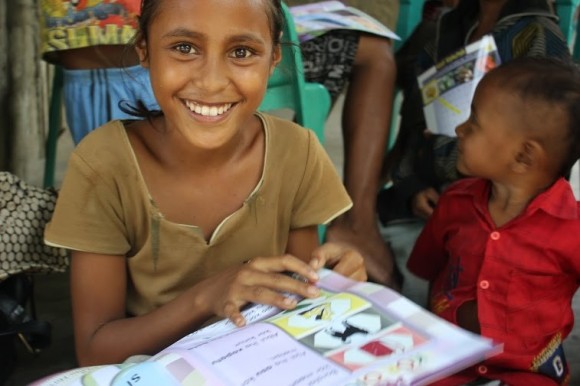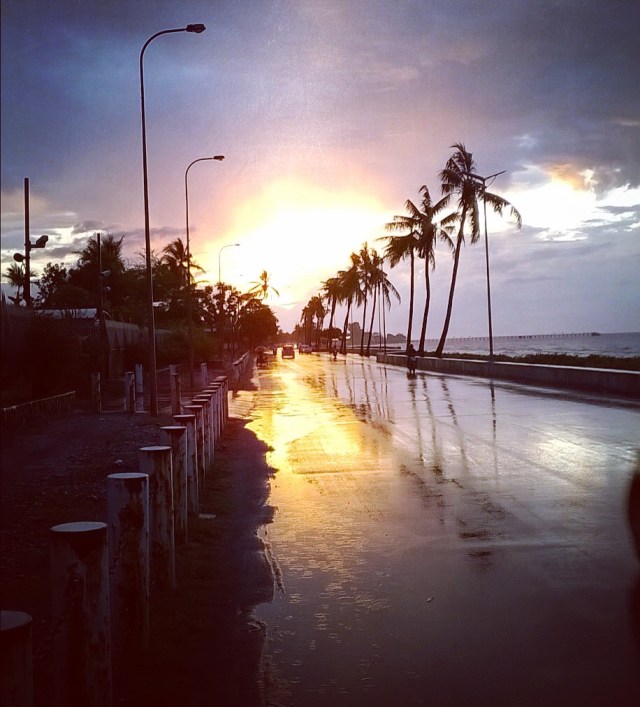
I’ve been working in Dili, the capital of Timor-Leste (East Timor) this week, and it’s been a privilege as always to spend time in new surrounds. More so when stationed one hundred metres from the sea, with spectacular daily sunsets, and some of the tastiest coffee money can buy.
Timor is an island, just a short hop north of Darwin, Australia, and up until quite recently, following 500 years of Portuguese occupation, was an Indonesian colony (between 1975 and 1999). The western side of the island is still governed by Indonesia. Timor-Leste claimed its independence in 2002.
Like so many other countries in 2016, Timor-Leste is experiencing the effects of the current El Nino droughts, disrupting the country’s wet season and ruining harvesting potential. A topic covered on this site back in March during my time in Ethiopia.
My assignment this week, however, has been to support CARE’s work to engage more with private sector companies in Timor-Leste (banks, retail, media and others) and examine ways in which, together, initiatives and relationships can be forged to tackle some of the social and economic challenges the country faces – poor infrastructure, lack of employment opportunities, issues around food security and nutrition, financial literacy, to name a few. Even without a more severe El Nino year, Timor-Leste is dealing with all of these mini crises combined.
And so during a CARE hosted Private Sector Forum here in Dili yesterday, we heard from various companies operating in the country, and how some companies have prioritised delivering on “social goals” within their businesses.
Companies such as ETO Group, who are targeting the creation of 5,000 new jobs for Timorese citizens through their procurement business. Another, Air Timor told us of their commitment to gender equality in the workplace. We also met with Telemor, a Vietnamese based telecom company, serving 450,000 Timorese and looking to scale up the wifi network here still further, whilst designing mobile banking solutions for customers from all demographics, in order to help people better manage and access their money.
In each of these examples, the “business case” for investing in either job creation, gender equality or new product designs for local communities, was well made and is clearly helping drive the companies more directly to achieving their goals. Call it a “win-win” outcome if you like, or perhaps this is just an example of doing good business? However, what was clear was that many companies at the Forum were not describing Corporate Social Responsibility, but instead hoping to develop sustainable business models.
For NGOs like CARE, around the world, there is an important role we can play when it comes to designing and implementing business models like these. Our local knowledge of communities, our grassroots networks, our experience of addressing poverty and injustice – these can all be brought to any business table, and leveraged.
The scale of some of the social issues here in Timor-Leste seems significant, yet with such a small population and geography, the prospect of impacting large percentages of the country’s citizens can be framed more opportunistically. A relatively small investment here can go a long way.
Which, in some ways, is how CARE has sought to contribute to the country’s literacy needs over the past 15 fifteen years.
During this time CARE has published a range of educational magazines for school children, for teachers and also for local communities.

The magazine is called “Lafaek” – which means crocodile in Tetum (the local language, although Portugese is still spoken widely also) and boasts a unique readership in Timor-Leste, because in three circulations each year (totaling 1 million copies) Lafaek directly reaches almost 200,000 children of primary school age, 10,000 teachers, and 85,000 households. In terms of its percentage reach in a single country Lafaek’s coverage is like no other education publication sold in any country in the world.
Lafaek uses storyboards, illustrations and recurring characters and, over the years, these have come to form a special association for school children and for adults up and down the country.
For a nation still rocked by the memory of conflict and war during the time of Indonesian occupation, the Lafaek brand has come to stand as a symbol for stability, learning, and a sense of normality – not just in the classroom, but in the household as well.
As CARE discovered a few years ago, when it conducted a survey of the Lafaek readership, the results were striking:
- 96% of teachers attested to the importance and popularity of the Lafaek magazines and reported using them to teach, emphasising that they were the only locally created, locally relevant, consistent curriculum support – and the only educational materials ‘that work’;
- 99% of teachers stated that Lafaek supported children’s learning in basic literacy, languages, natural and social sciences, health, geography, history and civic education
- 86% of teachers used Lafaek for lesson plans, curriculum content, ideas for activities; and their own professional development
- 91% of children in grades five to nine said they were learning from Lafaek;
- 79% of children said they also used the magazines at home;
- Parents were equally enthusiastic, saying that the magazine helped them to increase their knowledge and to have a better grasp of what their children were learning.
In much of the discourse around international “development” (and what we have learnt over the past half century about what works and what doesn’t work) it can be easy to overlook an intervention such as Lafaek.
Lafaek originally set out to provide teaching material for young children, via the medium of pictures and stories. However, over time, the consistency and quality of Lafaek’s messages have also had the power to a galvanize a generation of students, teachers and parents. It has helped build solidarity, and perhaps most critically, has respected the dignity of its readership.
Timor-Leste is in many ways no different a context to other parts of the world experiencing, or recovering from, protracted periods of conflict and disruption, and coping with the various social and economic longer term after-shocks. This year’s El Nino stands as yet another crisis for the country to now deal with.
In our global race to better deliver aid and development solutions, to those most in need (whether in Timor-Leste, in Vietnam, or in any country the world over) this week’s visit has hit home to me that, without working with others, and without investing in dignified interventions – in this case through a vehicle such as Lafaek and the power of storytelling – we will fail each and every time to reach the finish line.
Now, where did that sunset get to…


Great blog as usual Tim. Good to see you found some good coffee, always important when you are away from home.
It’s fairly compulsory for me Tracey, wherever I am :+)
Good one Tim. Interesting to know that companies in countries such as East Timor are looking at building sustainable businesses rather than the regular CSR approach. On coffee- did you try the Kapi Luwak or not?!
Thanks Niresh – I may have gone here https://www.tripadvisor.com.au/Restaurant_Review-g297517-d6777990-Reviews-Letefoho_Specialty_Coffee_Roaster-Dili_Dili_District.html several times (ie twice a day!)